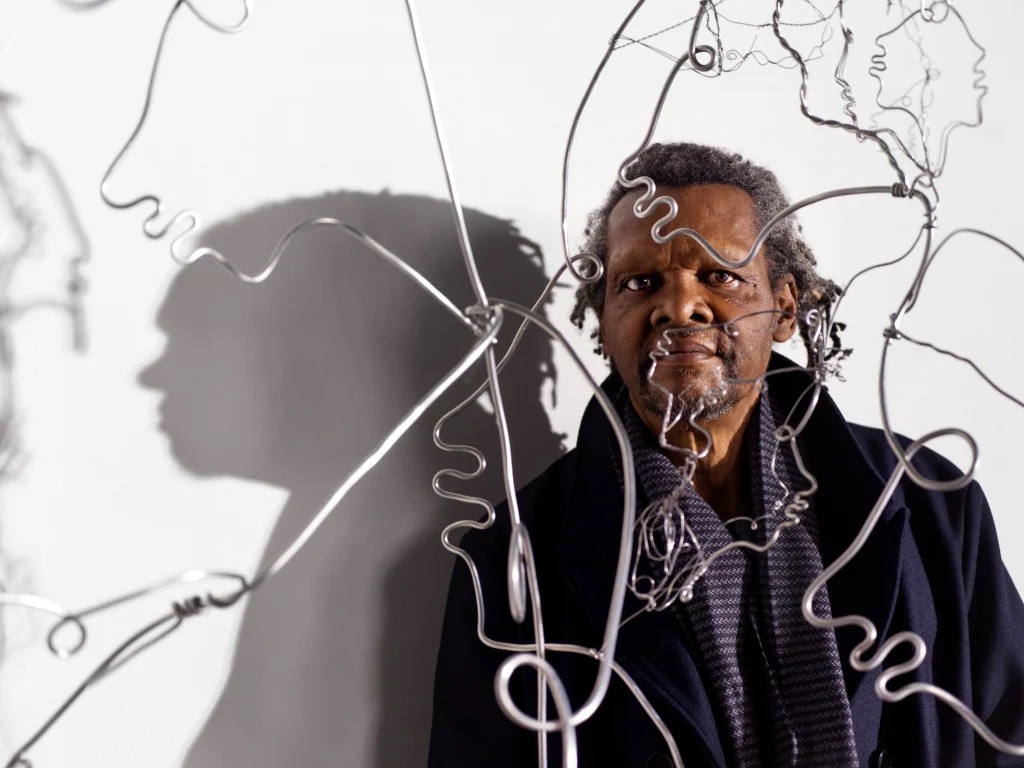When musician and artist Lonnie Holley arrived in Paris in 2019, Notre Dame was still smoldering. He was touring to support his 2018 album “MITH,” but the venue was only blocks away from the cathedral and he wanted to bear witness. During his previous visits inside, Notre Dame’s grandness had inspired him to spontaneously sing, and when he went over after the gig and saw it eaten away by flames, he sang once again, this time in sorrow. Walking through fourth arrondissement, he improvised a tune that he would later name “I Smell Smoke on the Streets of Paris.”
10 March 2023 The acclaimed artist is now a celebrated musician. His new album, “Oh Me Oh My,” is another cathartic piece of expression.
This is Holley’s way. Whether in his celebrated multimedia visual work or as a performer, he finds transcendence in apocalyptic imagery and beauty in terror. The most recent fruit of his fecund and turbulent imagination is the new album “Oh Me Oh My.” By some measure, it is his most seemingly mainstream project, featuring production by Jacknife Lee (U2, Modest Mouse, Taylor Swift) and guest vocals by R.E.M.’s Michael Stipe, Bon Iver’s Justin Vernon and the acclaimed poet-musician Moor Mother, among others. But the vision is wholly Holley’s, and the music is his signature ambient-soul: half-spoken, half-crooned, built on pillowy keyboards but almost uncomfortably intense and intimate. His words are improvised, drawing on that same attention to sensory detail — and destruction — that compelled his Paris outburst.
“I think if you listen to my music and close your eyes, it’s almost like me painting a picture of it,” he says from his studio in Atlanta. “The artistic brain, the musical brain, they come from the same place. I have to go into the ocean of thoughts, the well of thoughts.”
On “Better Get That Crop in Soon,” Holley sings over Lee’s hard-swinging drums, speaking as an enslaved person, addressing “Massah”: “That old leather whip … split her back wide open.” On “I Can’t Hush,” Holley remembers looking at his mother and grandmother as a child, wondering why they never spoke about the terrible pain they’d endured in the Jim Crow South, promising he will speak for them now. History is always present in Holley’s music, but so is the hopeful future. “As we grow we learn each other more and more and more,” he sings on the title track, “We learn how precious life is.”

Photo: David Raccuglia
By the time Lonnie Holley turned 10, he had experienced more strife and trauma than most people can imagine. He was born in Birmingham, Ala., in 1950, one of 27 children. The poverty was so intense that his parents agreed to give him to a burlesque dancer who could breastfeed him. But that dancer eventually passed baby Lonnie along to the McElroys, a local couple who owned a whiskey house. Holley was a toddler when he arrived there, and the cruelty was immediate and unrelenting.
He was beaten by his alcoholic adopted father and stabbed in his head with a fireplace poker by a drunk visitor. He was the only one home when kindly, maternal Mrs. McElroy died, and 7-year-old Lonnie spent days in the house alone with her corpse. When he returned from carousing, Mr. McElroy chased the boy out, and Lonnie was hit by a car and dragged down the street, putting him in a weeks-long coma.
This harrowing childhood is recounted in the first episode of a new podcast, “Unreformed: The Story of the Alabama Industrial School for Negro Children,” which is written and hosted by Josie Duffy Rice, a journalist who studies the criminal justice system. The show concerns the title institution, better known as Mount Meigs, where hundreds of black juveniles were abused, starved and effectively enslaved in the 1960s. Holley was sent there at age 11, after being picked up by police for breaking curfew.
Like Satchel Paige, the legendary Negro Leagues pitcher who spent six years imprisoned at Mount Meigs, Holley is what Duffy Rice calls “one of the lucky ones.” Many of the institution’s “graduates” became criminals, but Holley became a world-renowned visual artist, with work in New York’s Museum of Modern Art, Atlanta’s High Museum, the Philadelphia Museum of Art and the White House. Holley’s sculptures, often made from found objects and full of human forms and faces, are also in the National Gallery of Art’s permanent collection and are featured in a current exhibition, “Called to Create: Black Artists of the American South.”

